The fishing cat is an endangered medium-sized wild cat that inhabits the wetlands of the southern regions of Asia.
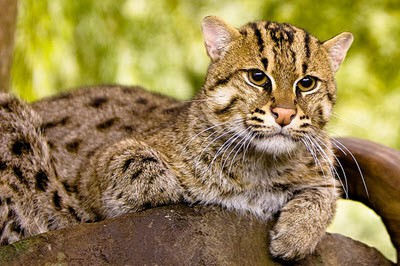
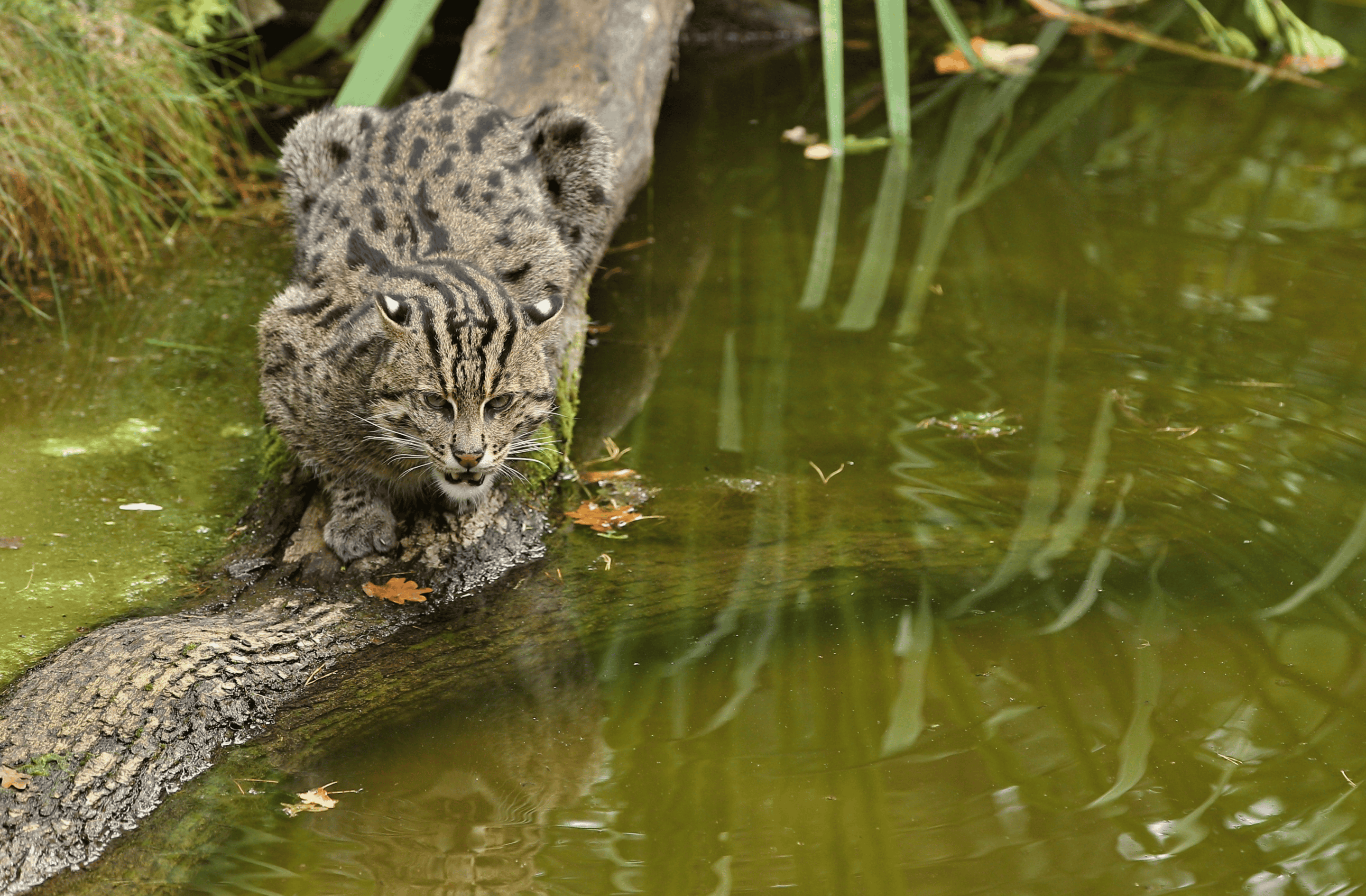
Scientific Name: Prionailurus viverrinus
Conservation Status: Vulnerable
Lineage – The fishing cat is the largest member of the Prionailurus genus, a group of wild cats found in Asia, including the leopard cat, Sunda leopard cat, flat-headed cat, and rusty-spotted cat. The Prionailurus genus and Otocolobus genus are part of the leoaprd cat lineage.
Interesting fishing cat facts
- found near wetlands, including rivers, swamps, and lakes.
- The largest of all the Prionailurus cats
- Has a layered fur for swimming to provide a barrier to water and thermal insulation.
- Primarily preys on fish.
- Excellent long-distance swimmer. Also swims underwater.
- The first scientific classification was proposed in 1833.
- The fishing cat’s paws have less webbing than a leopard cat
- Claws are not completely sheathed and protrude somewhat even when retracted.
More about the fishing cat
Fishing cats are considered an “indicator species.” Their presence or absence indicates the health of the ecosystem they inhabit.
Physical appearance
Fishing cats are approximately twice the size of domestic cats. They have a stocky build with short legs.
The fishing cat has yellow-grey to grey fur with stripes on the shoulders, spots on its flanks and sides, and a white underside. Its ears are round and short, with a white spot on the back. The face has two stripes on the cheeks and four stripes that run above the eyes to the shoulder.
| Fishing Cat | FROM | TO |
| Weight – Male | 18 lbs. | 37 lbs. |
| Weight – Female | 11 lbs. | 20 lbs. |
| Length | 22 in. | 31 in. |
| Tail | 7.9 in. | 11.8 in. |
 Location and habitat (where the fishing cat lives)
Location and habitat (where the fishing cat lives)
The fishing cat primarily inhabits wetlands like swamps and marshes and can be found around lakes, creeks, and mangrove forests. It is mainly found in India and Nepal (Himalayan foothills), Thailand, and Java, with some sightings in Cambodia.
Hunting and prey (diet)
Fishing cats can swim great distances, including underwater. They have been seen hunting in and around water. Their primary prey is fish, but their diet consists of rodents, birds, insects, mollusks (marine organisms), and reptiles.
Reproduction and lifespan
Mating typically occurs between January and February. Pregnancy lasts from 63 to 70 days. Litters consist of two to three kittens. The kittens start playing in the water after a few months. Fishing cats reach adulthood at around 8 1/2 months and are sexually mature at 15 months. Their lifespan is up to 10 years in captivity.
Conservation threats
The destruction of wetlands, primarily due to the expansion of human settlements, is a primary threat to the fishing cat. Urbanization is also causing more fishing cats to be killed crossing roads. Deforestation is another critical issue. When trees are removed, silt (fine-grained soil) accumulates and begins filling in areas where there is water. Agricultural runoff, chemicals, and trash contaminate waterways inhabited by fishing cats. Human-animal conflict, including retaliatory killing, has been a significant problem as well.
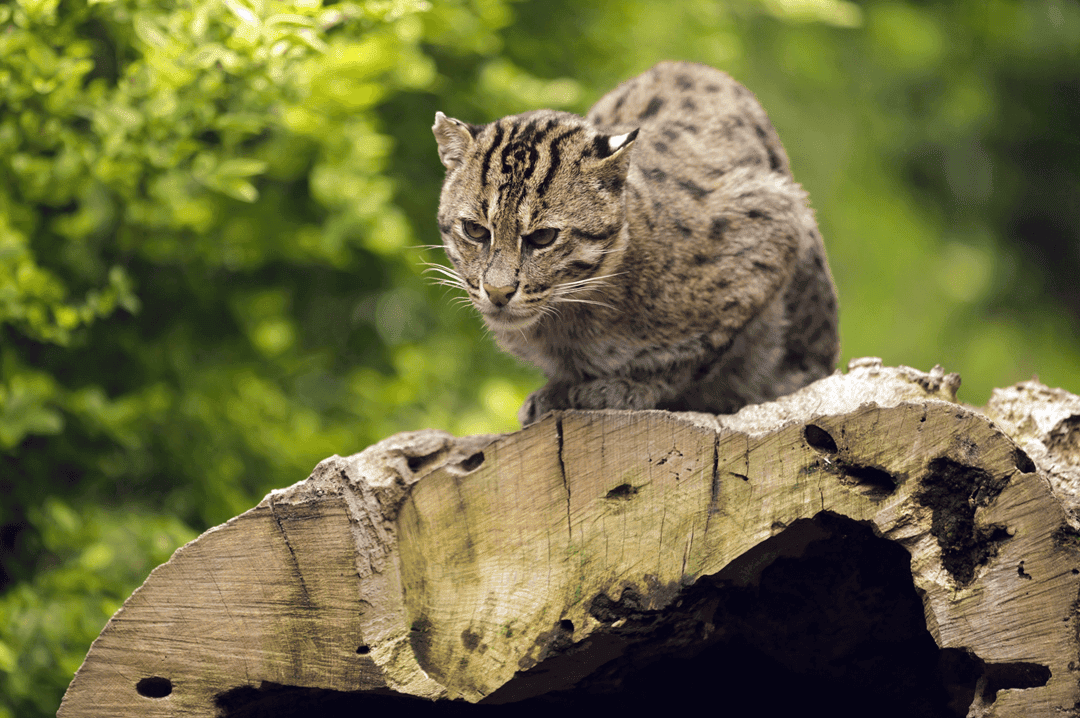
Fishing cat research and quotes
2021 Status, current distribution and threats of the Fishing cat Prionailurus viverrinsus in Nepal | Timilsina, Mishra, Gautam, Adhikari – “Fishing cat have been facing extinction threats mainly due to poaching, over-exploitation of local fish stocks, retaliatory killing, wetland shrinkage and conversion, pollution and conflicts with humans.”

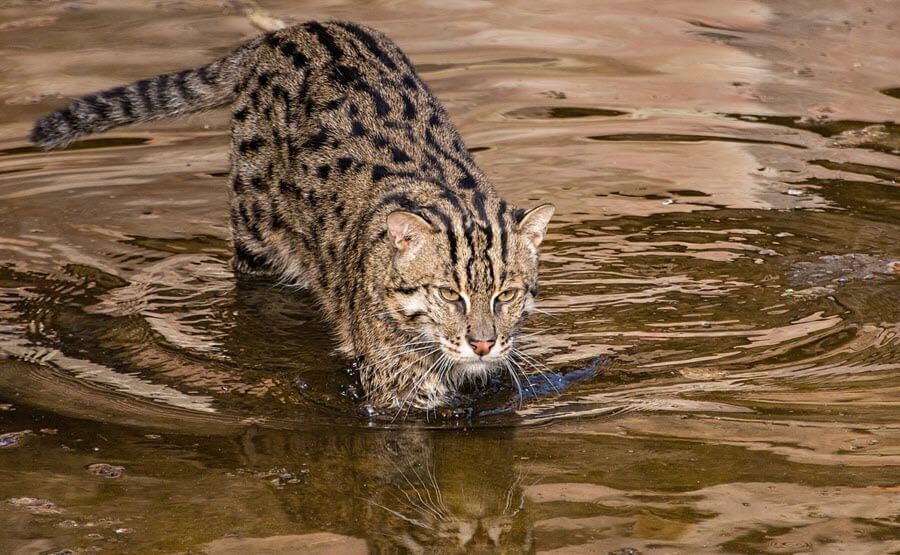
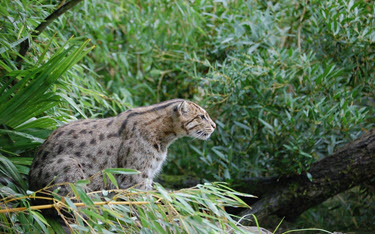 Location and habitat (where the fishing cat lives)
Location and habitat (where the fishing cat lives)

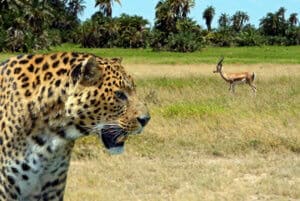








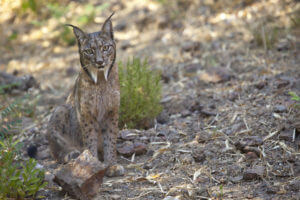




I WISH I HAD A RUSTY CAT OR / FISHING CAT. I HAVE A BLUE POINT SIAMESE & SNOW TIGER SIAMESE KC.